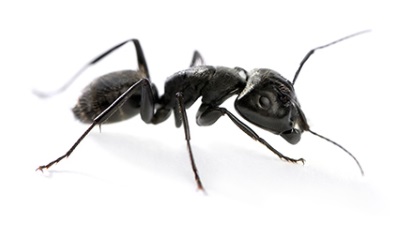Getting My Pest Control Chicago To Work
Getting My Pest Control Chicago To Work
Blog Article
Get This Report on Pest Control Chicago
Table of ContentsGetting The Pest Control Chicago To WorkSome Of Pest Control ChicagoA Biased View of Pest Control ChicagoThe Only Guide for Pest Control ChicagoMore About Pest Control ChicagoExcitement About Pest Control Chicago
Planting or collecting a crop before (or after) a pest is existing decreases pest damage by avoidance. Capturing and calculating a bug's expanding degree days can help with planning around a bug's lifecycle. Damage tolerance can occasionally be accomplished by growing a plant early so that the plants are more powerful, extra resistant, and extra tolerant to damage by the time insect bugs exist.
By creating a little, regulated room that the pests like, it is feasible to divert pests away from the main plant. 2 techniques for this are trap cropping and strip harvesting. is growing a preferred host plant of an insect pest near the main plant that is to be shielded.
If necessary, the pests can then be killed in the catch plant. Trap crops can be any type of types that the bug preferseven be the very same varieties as the primary crop - Bug removal experts in Chicago. If the trap crop coincides types as the main plant, it must be grown each time that will best entice the bug far from the key plant
Facts About Pest Control Chicago Uncovered
 This technique serves when harvesting a catch crop due to the fact that it maintains some environment for the pest. Therefore, the pest does stagnate to locate new environment in a nearby greater value or more at risk crop. https://www.huntingnet.com/forum/members/pstc0ntrlchg.html?simple=1#aboutme. The methods already pointed out concentrate on minimizing crop direct exposure to insect pests, however it is also feasible to reduce yield loss also when insect damages takes place
This technique serves when harvesting a catch crop due to the fact that it maintains some environment for the pest. Therefore, the pest does stagnate to locate new environment in a nearby greater value or more at risk crop. https://www.huntingnet.com/forum/members/pstc0ntrlchg.html?simple=1#aboutme. The methods already pointed out concentrate on minimizing crop direct exposure to insect pests, however it is also feasible to reduce yield loss also when insect damages takes placeTo practice IPM in the landscape, pick plants that are well matched to the site. Plant them properly and maintain the plants healthy and balanced by meticulously sprinkling, fertilizing, and pruning them. Look out for issues on your plants as they develop. If a parasite or condition causes undesirable damage in spite of preventative efforts, select an effective monitoring method that will certainly have the least quantity of influence on various other living animals and the environment.
The Main Principles Of Pest Control Chicago
 Look for signs the plant exhibits as an outcome of pest task. Identify your plants to be certain that the twisted fallen leaves, unusual pigmentation, or strange-looking structures you see are not a regular part of the plant.
Look for signs the plant exhibits as an outcome of pest task. Identify your plants to be certain that the twisted fallen leaves, unusual pigmentation, or strange-looking structures you see are not a regular part of the plant.Pests and mites commonly are connected with certain plants, and they follow specific development and habits patterns as the period progresses. Usage reference books from the collection or garden center to recognize pests. If you can not find a precise summary there, speak with someone in your regional expansion office. Discover concerning the bug's life process, behavior, and natural adversaries.
If so, an application of a nonselective insecticide could kill them, allowing the pest population to rebound uninhibited by predators and parasites, which may have been offering considerable control. If a control is needed, think about physical or biorational techniques. If they are not available or unwise, you may need to thoroughly use a conventional chemical control.
Some Ideas on Pest Control Chicago You Should Know
 Some aphids and termites can be knocked off by splashing the plant with water. Bagworm larvae can be chosen off a ravaged plant. You can use catches to catch specific parasites, and barriers to secure plants from insect attack or illness infection. One reliable method for regulating gypsy moth larvae on small numbers of trees is to place a band of folded burlap around the tree trunk to give a fabricated resting website for the caterpillars, and after that destroy the caterpillars that gather there.
Some aphids and termites can be knocked off by splashing the plant with water. Bagworm larvae can be chosen off a ravaged plant. You can use catches to catch specific parasites, and barriers to secure plants from insect attack or illness infection. One reliable method for regulating gypsy moth larvae on small numbers of trees is to place a band of folded burlap around the tree trunk to give a fabricated resting website for the caterpillars, and after that destroy the caterpillars that gather there.In some cases, the finest option might be literally eliminating the plant and changing it with one that will certainly not be influenced by the bug or condition. The initial team consists of living microorganisms that can eliminate the bug.
An example of an approach that makes use of a normally happening biochemical is the bacterium Bacillus thuringiensis (Bt). Bt contains a healthy protein that is dangerous to certain bugs, yet harmless to various other microorganisms.
The Ultimate Guide To Pest Control Chicago
When the sensitive bug bug feeds on the splashed leaves, it my site will certainly ingest the healthy protein and be killed. Traditional chemicals are used just as a last resource in an IPM program, however sometimes are one of the most effective ways of control. To have the greatest impact, these products need to be used on a particular component of the plant when the pest is most prone.
In most cases, environmentally risk-free chemicals such as horticultural oil or insecticidal soap are reliable choices - https://medium.com/@amandasheets60612/about. Once more, applications need to be timed carefully to have the best effect on the bug insect population. Since they have no recurring activity after they have actually dried, soaps and oils are normally the option that is the least disruptive to populaces of advantageous microorganisms
These words, from least hazardous to most toxic are: "caution," "caution," and "danger." Utilize these words as standards to help you select the least unsafe material among the reliable alternatives. For many landscape parasites, you need to consider chemicals in just the initial two classifications. Some chemical solutions can be applied only by applicators with special training and that are licensed by the state's division of farming.
The Ultimate Guide To Pest Control Chicago
Refer to the Woody Ornamental Bug, Mite, and Disease Management Overview, released by Penn State Expansion, or to one more current reference for a list of products that are signed up for use on plants in your state. Read the tag to make sure that you have actually selected a product that is effective versus the bug you have identified, and pick your timing based upon expert recommendations.
Report this page